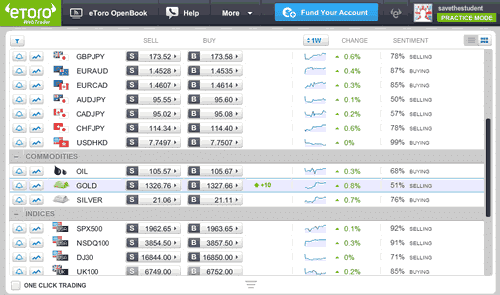A healthy diet should include a wide variety of nutritious foods for sufficient intake of all nutrients, including vitamins and minerals. Foods to include are breads, pastas, lean meats, fish, fruits and vegetables. A healthy diet can help you maintain a healthy body weight and decrease your risk of many diet-related chronic diseases, such as cardiovascular disease, type 2 diabetes and some cancers.
Healthy diets contain a variety of foods
In general, we should include a range of nutritious foods and eat:
- plenty of breads and cereals (particularly wholegrain), fruit, vegetables and legumes (such as chickpeas, lentils and red kidney beans)
- low-salt foods, and use salt sparingly
- small amounts of foods that contain added sugars
- reduced-fat milk and other dairy products.
It is also important to drink an adequate amount of water.
Physical activity and healthy eating
A good balance between exercise and food intake is important, as this helps to maintain muscle strength and a healthy body weight. At least 30 minutes of moderate intensity physical activity, such as walking, is recommended every day.
Keep fat to a minimum
Adult diets should be low in fat, especially saturated fat. Saturated fat, which is the main fat in animal products, fried foods, chocolate, cakes and biscuits, is more easily deposited as fat tissue than unsaturated fat. Saturated fat can also be converted into cholesterol and cause blood cholesterol levels to rise.
Dietary fat helps with the absorption of fat-soluble vitamins (A, D, E and K). Small amounts of polyunsaturated and monounsaturated fats may have some health benefits when they are part of a healthy diet. Monounsaturated fats are found in nuts, olive oil and avocados, and may help to lower the bad type of cholesterol (low-density lipoprotein or LDL).
Polyunsaturated fats are generally thought to lower blood cholesterol levels. Polyunsaturated omega-3 fatty acids, which are found in fish, nuts and seeds, are thought to have an anti-clotting effect on blood, to reduce the risk of heart disease and to possibly lower blood pressure.
Eat and drink less high-kilojoule foods
The total amount of energy-dense (high-kilojoule) foods you eat may be as important as the total amount of fat in your diet. To reduce the energy density of your diet, you need to increase the amount of plant foods, such as wholegrain breads and cereals, fruit and vegetables that you eat.
This will provide essential nutrients, help to make you feel ‘full’ and also reduce the amount of fat in your diet. High energy drinks such as sports drinks, cordials, soft drinks, fruit juice, energy drinks should also be limited.
Eat foods rich in calcium and iron
It is important for all Australians to eat foods which contain iron and calcium. In particular:
- Calcium – is important for bone health especially for infants, women and girls.
- Iron – carries oxygen around the body and is especially important for women, girls, vegetarians and athletes to reduce the risk of anaemia.
Drink alcohol in moderation
Alcohol is high in energy (kilojoules) and should be consumed in moderation. Men should drink less than two standard drinks per day and women less than one standard drink per day. One standard drink is 375 ml mid-strength beer, 100 ml wine or 30 ml spirits. Alcohol should not be given to children and is not recommended for pregnant or breastfeeding women.
Healthy diets for babies and children
There are guidelines to follow that help encourage a healthy diet for your infant or child, including:
- Infants – it is encouraged for babies to be breastfed for the first year of life. In most cases, breastfeeding should be the only source of food in the first six months. If you use formula, be careful not to overfeed or underfeed your baby.
- Sugar – children should eat only a small amount of foods that contain sugar and avoid food with added sugar, such as lollies, fruit drinks and soft drinks.
- Low-fat diets – are not appropriate for infants and young children under two years of age. A diet low in fat, especially saturated fat, may be considered for older children.
- Drinks – infants and children should be encouraged to choose water as their preferred drink.
Don’t skip breakfast
Children who skip breakfast generally have poorer nutrition. Their diets contain less:
- calcium
- iron
- dietary fibre
- vitamins such as riboflavin and niacin.
Skipping breakfast becomes more common as children get older. Some schools have introduced breakfast programs because they were concerned about children who skip breakfast. Children generally perform better at school when they have breakfast. They are also more likely to maintain a healthy weight when they consume a healthy breakfast.
Adults who eat a healthy breakfast are more likely be a healthy weight and more productive at work.
Tips for healthy breakfasts
Some easy-to-prepare, healthy breakfast ideas include:
- fresh fruit with wholegrain breakfast cereal and reduced fat milk. Toast with a thin spread of margarine (polyunsaturated or monounsaturated)
- toast with cheese and tomato. Hot or cold reduced fat milk
- rolled oats made with quick oats. Add sultanas and reduced fat milk. Toast with a thin spread of margarine (polyunsaturated or monounsaturated). Orange juice
- baked beans on toast. Orange juice
- fruit or plain yoghurt with fruit.

 Eating foods that contain saturated fats raises the level of cholesterol in your blood. High levels of LDL cholesterol in your blood increase your risk of heart disease and stroke.
Eating foods that contain saturated fats raises the level of cholesterol in your blood. High levels of LDL cholesterol in your blood increase your risk of heart disease and stroke.


 Well it seems like you’re pretty nifty with a web browser, so perhaps it’s time to turn pro and browse websites as a paid and fun job!
Well it seems like you’re pretty nifty with a web browser, so perhaps it’s time to turn pro and browse websites as a paid and fun job! One of the best things on eToro is the CopyTrader feature. This lets you literally see, follow and copy the investments of other top performing traders.
One of the best things on eToro is the CopyTrader feature. This lets you literally see, follow and copy the investments of other top performing traders. If you don’t mind sharing your notes with other students it’s a great way to generate a little extra cash. There are sites out there that you can upload your notes to, along with your price, and then when another student downloads them you get paid.
If you don’t mind sharing your notes with other students it’s a great way to generate a little extra cash. There are sites out there that you can upload your notes to, along with your price, and then when another student downloads them you get paid.